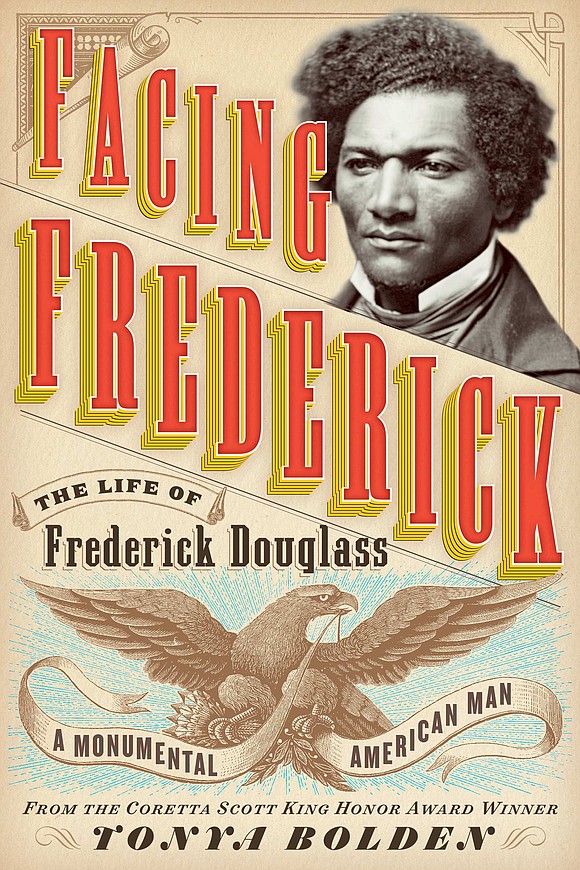“Facing Frederick: The Life of Frederick Douglass, A Monumental American Man” by Tonya Bolden
Terri Schlichenmeyer | 2/2/2018, 1:45 p.m.

You’re not backing down.
There’s a line in the sand and nobody’s crossing it on your watch. When something isn’t right and you can fix it, you’re going to defend it, too, even if it costs you. As you’ll see in “Facing Frederick” by Tonya Bolden, if you lived in the mid-1800s, you’d be in good company.
Though he really didn’t like to talk about it much, Frederick Douglass had been through things that were unimaginable. From the moment he was born into slavery, he was taken from his mother, who died when Frederick was small. At age six, his owner removed him from his grandparents’ farm to a plantation house; there, he slept on the floor of a closet. He was hired out to a slavemaster who beat him for no reason at all, and he worked as a shipbuilder before escaping from bondage.
Douglass didn’t like to talk about his life – but he had to. As a young man, he gained recognition as an orator and newspaper publisher, but people thought he was a “fake.” He grew awfully sick of that and so he wrote a book, to great acclaim, though doing so was dangerous: Douglass used several aliases in his anti-slavery activism, and his book finally laid bare the whole truth. Finding safety in Great Britain, he became a celebrity there, and met some men who further influenced his life and his work.
Following his time in Great Britain, he returned to America and started an anti-slavery newspaper with donations he’d received while overseas. The paper faltered later because Douglass “miscalculated,” but that setback didn’t cause him to lose sight of his goal; in fact, it strengthened his anti-slavery ideals. He and his family became conductors on the Underground Railroad, moving people up through New England into Canada.
“With the outbreak of the Civil War,” says Bolden, “Frederick’s hopes soared.”
But he still wasn’t happy: Black soldiers weren’t allowed to do their part in the War, and Douglass wanted that changed. Finally, on August 10, 1863, he went to the White House. The man who was once a little boy who slept on the floor of a closet had an appointment with President Lincoln….
Filled with excerpts from diaries, newspaper articles, bits of speeches, and reproductions of photographs, “Facing Frederick” is a great book with a powerful story.
Getting the full extent from of it, I think, will depend on the age of its reader.
Because it wouldn’t be the same biography without dates and accounts of Douglass’ travels and actions, there’s a lot in here and this book can be hard-to-follow. Older kids on a 10-to-14-year-old spectrum shouldn’t have any problem with it; it’s lively enough between the dates-and-facts to keep that age group’s attention. Kids on the younger side may struggle with too many facts.
Even so, let them try. “Facing Frederick,” published in honor of the 200th anniversary of Douglass’ birthday, is a big story that’s too important to miss. They may not be able to put it down.
Share this story online at stylemagazine.com.



